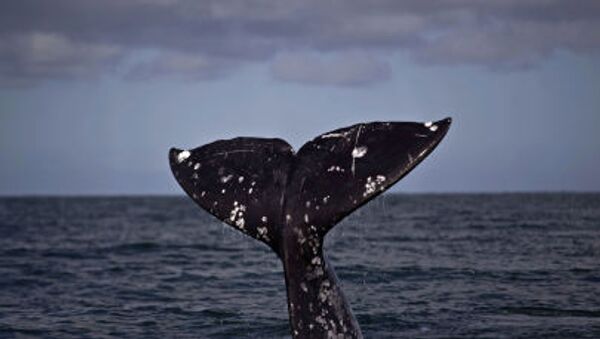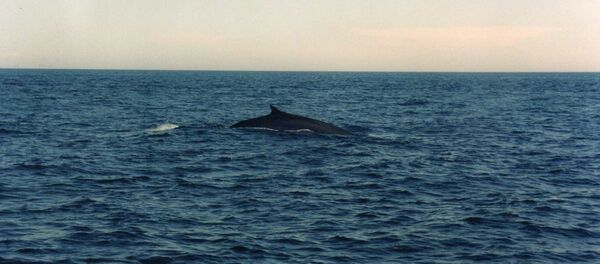Published Tuesday in the Marine Mammal Science journal, the report found that the beaked whale that washed up in St. George was two-thirds smaller than a Baird’s beaked whale, measuring about 24 feet long, while the Baird’s typically grows to between 30 and 45 feet. The dead whale’s teeth were worn and yellow, indicating that it was not young.
Phillip Morin, molecular geneticist at the National Oceanic and Atmospheric Administration's Southwest Fisheries Science Center and lead author of the report, said, "We don't know how many there are, where they're typically found, anything," and that, "It’s just so exciting to think that in 2016 we're still discovering things in our world — even mammals that are more than 20 feet long."
Other characteristics besides length distinguish the specimen, including a differently-shaped dorsal fin and a unique slope of the skull.
Karin Holser, a teacher, discovered the whale, which has not yet been formally named. Holser alerted authorities and noted that the whale Japanese fishermen call "karasu" or "raven"bears some resemblance to the Baird’s beaked whale.
Morin’s research team has analyzed DNA tests from whales that inhabit the Sea of Okhotsk in the western Pacific Ocean and acquired bone powder from museum specimens to compare in their study of the carcass. They also studied the records of Japanese whaling fleets detailing the skulls and beaks of the whales. Even a whale skeleton suspended from a high school gym ceiling in the Aleutian Islands has been studied.
Research revealed that Holser’s beached whale was different from the 22 species of beaked whales already documented.
Morin said, "The thing about beaked whales is they're very elusive." The whale species spends most of its time underwater and can swim deeper than 3,000 feet. Tending to feed on deep-dwelling animals, including squid, the species does not jump or spray when surfacing.
"They’re very cryptic," he said, "They’re hard to see when they come to the surface." Morin believes this new breed to be extremely rare, suggesting also that it travels to tropical climes, as Holser’s specimen has wounds that could have been inflicted by Cookiecutter sharks that inhabit equatorial regions. Morin said, "Aside from that, we don't really know."





